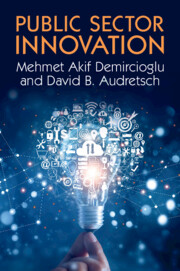Book contents
- Public Sector Innovation
- Public Sector Innovation
- Copyright page
- Dedication
- Contents
- Figures
- Tables
- Acknowledgments
- 1 Introduction
- 2 What Is Public Sector Innovation?
- 3 Public versus Private
- 4 The Context of Public Sector Innovation
- 5 Innovation Typologies
- 6 Why Public Sector Innovation?
- 7 Drivers and Conditions for Innovation
- 8 Sources of Knowledge and Collaborative Innovation
- 9 Barriers to Public Sector Innovation
- 10 National Systems of Innovation and Market and Government Failure
- 11 Outcomes of Public Sector Innovation
- 12 Ethics and Public Sector Innovation
- 13 Conclusions
- References
- Index
- References
References
Published online by Cambridge University Press: 23 November 2024
- Public Sector Innovation
- Public Sector Innovation
- Copyright page
- Dedication
- Contents
- Figures
- Tables
- Acknowledgments
- 1 Introduction
- 2 What Is Public Sector Innovation?
- 3 Public versus Private
- 4 The Context of Public Sector Innovation
- 5 Innovation Typologies
- 6 Why Public Sector Innovation?
- 7 Drivers and Conditions for Innovation
- 8 Sources of Knowledge and Collaborative Innovation
- 9 Barriers to Public Sector Innovation
- 10 National Systems of Innovation and Market and Government Failure
- 11 Outcomes of Public Sector Innovation
- 12 Ethics and Public Sector Innovation
- 13 Conclusions
- References
- Index
- References
- Type
- Chapter
- Information
- Public Sector Innovation , pp. 203 - 240Publisher: Cambridge University PressPrint publication year: 2024

